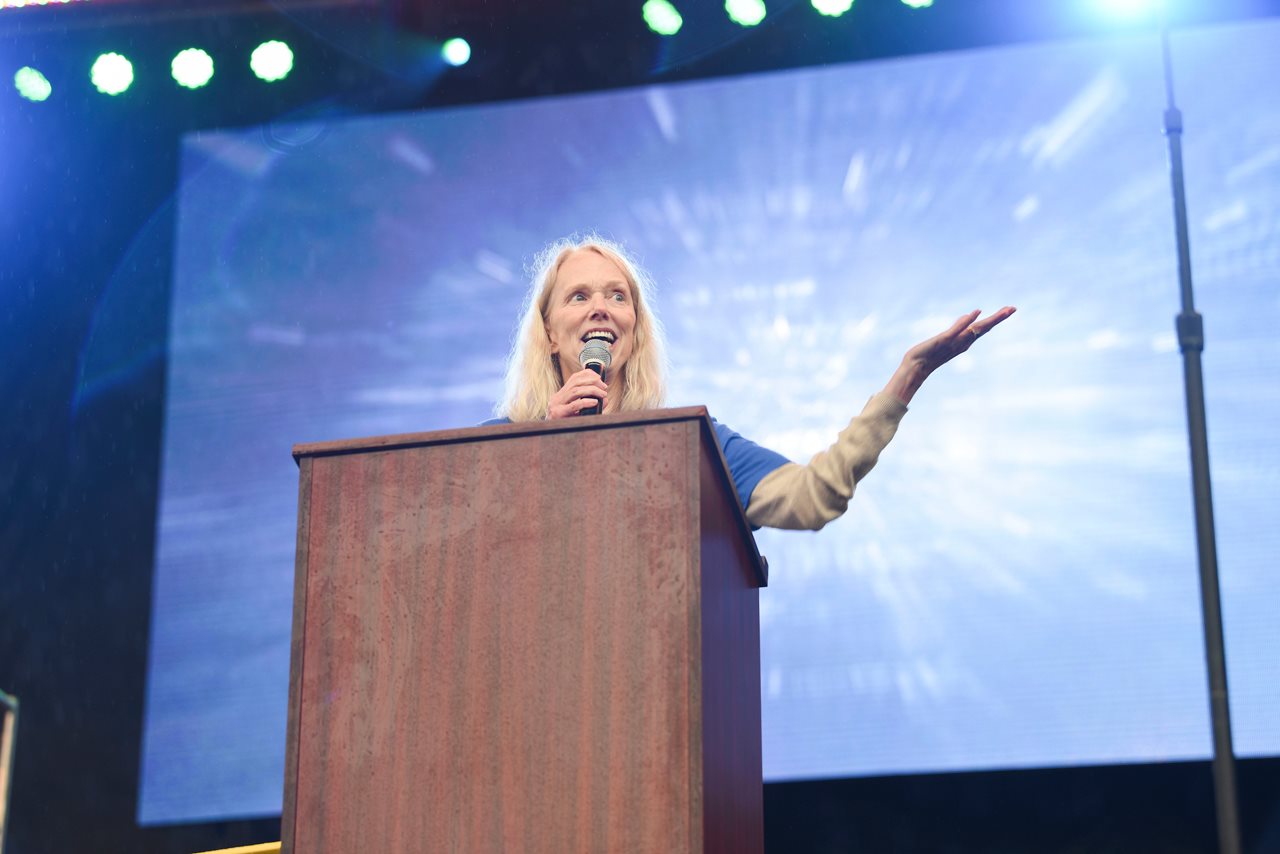(BPT) - -

Cool Effect Co-Founder and Director of Carbon Projects Dee Lawrence is proud of the nonprofit's efforts in supporting high-quality carbon-reducing projects since launching at COP21 in 2015. Her drive and dedication remains today, with Cool Effect having built a community of 500,000+ supporters spanning individuals, organizations and businesses and over five million tonnes of carbon emissions reduced.
The annual Conference of the Parties, or COP, kicks off next month in Egypt. While this annual gathering of climate leaders is a critical decision maker in addressing climate change, many are still unaware of the conference and its implications. Ahead of the 27th Conference of the Parties next month, we're breaking down 27 things you should know about COP, why it matters, and what the conference signifies for Cool Effect in particular.
- At the Paris Conference of Parties (COP) in 2015, 196 nations around the world signed an agreement to reduce emissions in their country by specified amounts.
- Only registered representatives of Parties, observer states, and admitted observer organizations can attend in-person sessions for COP. Conferences are not open to the general public.
- The COP is the supreme decision-making body of the United Nations Framework Convention on Climate Change (UNFCCC).
- Each year, COP assesses progress on combating climate change.
- COPs are used to review what Parties have achieved, and measure progress.
- COP is also where negotiations take place for the next round of emissions reductions and ensuring we collectively reach the goals of the Paris Agreement.
- The very first COP occurred in Berlin, Germany in 1995. It established the Berlin Mandate, which declared portions of the 1992 Rio Convention 'inadequate.' COP1 emphasized the importance of setting specified time frames, and acknowledged that developed nations must play a larger role.
- The Berlin Mandate led to the 1997 Kyoto Protocol, adopted at COP3. The Kyoto Protocol focused on reducing emissions and increasing contributions from wealthier nations, setting a goal of overall emissions reductions of 5 percent below 1990 by 2012.
- The 'parties' refers to the 197 nations that agreed to a new environmental pact to stabilize greenhouse gas emissions and avoid dangerous climate change, the UNFCCC, at a meeting in 1992.
- COP brings together governments, business leaders, activists, and other groups.
- COP is the annual UN Climate Change Conference that takes place in a different host city each year.
- The Paris Agreement, a legally binding treaty adopted by 196 countries, was signed at COP21 (the climate change conference in Paris in 2015) and established a goal to limit global warming to well below 2, preferably to 1.5 degrees Celsius, compared to pre-industrial levels. The Paris Agreement also included countries offering financial assistance to poorer countries to reduce emissions.
- COP21 is also a significant moment in time for Cool Effect as it represents where it all started: Cool Effect officially launched at COP21 in 2015, with the team on the ground in Paris.
- The Paris Agreement was a landmark deal in the multilateral climate change process because it represented the first time a binding agreement was put in place to bring all nations together under a common cause, unifying the planet to not only combat climate change, but adapt to its effects.
- The treaty is assessed every five years, which means COP26 was the first time the treaty was revisited and that countries needed to show how they had met their national targets (NDCs).
- COP26 occurred in 2021 in Glasgow, Scotland, and was attended by over 38,000 delegates, making it the largest in history.
- The talks culminated in the Glasgow Climate Pact, which committed to maintain the 1.5°C goal identified in the Paris Agreement, and for the first time in the history of the UNFCCC, the COP decision called upon Parties to accelerate the phasing down of 'unabated coal and inefficient subsidies for fossil fuels.'
- At COP26, an agreement was reached regarding Article 6 of the Paris Agreement, establishing a framework for countries to trade mitigation outcomes to achieve their national targets (NDCs), using market mechanisms to incentivize cost-effective reductions or removals of greenhouse gas emissions. Importantly, as a result of COP26 in Glasgow, countries can now authorize the use of emissions reductions in the voluntary carbon market.
- All nations agreed to submit enhanced emission-cutting pledges ahead of COP27.
- The 27th Conference of Parties of the UNFCCC (COP27) is occurring from Nov. 6 - 18, 2022.
- COP27 will take place in Sharm el-Sheikh, South Sinai, Egypt.
- Over 15,000 people are expected to visit Egypt to attend COP27.
- 'Together for implementation' is the COP27 tagline.
- Since first launching at COP21, Cool Effect has built a community of 500,000+ supporters spanning individuals, organizations and businesses.
- As a result of the collective action of those supporters, Cool Effect has retired over five million tonnes of carbon emissions, resulting in over $36 million being directed to the developing world since launching at COP21.
- Each year, COP is a crucial part of avoiding dangerous climate change. There's simply no time to waste - if the world is going to rise up to the standards set in 2015, we need to collectively halve emissions within the next decade and become a net zero world by 2050.
- COP reminds us that even when the climate outlook seems grim, there is a huge community of governments, business leaders, activists, and more taking action to protect the planet and the place we call home.
Learn more about Cool Effect and join us in the fight against climate change at cooleffect.org.